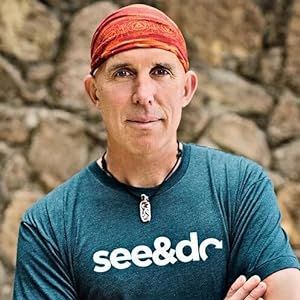
Born to Run: A Hidden Tribe, Superathletes, and the Greatest Race the World Has Never Seen
4.7 out of 5
24,827 global ratings
NATIONAL BESTSELLER • The astonishing and hugely entertaining story that completely changed the way we run. An epic adventure that began with one simple question: Why does my foot hurt?
“Equal parts quest, physiology treatise, and running history.... The climactic race reads like a sprint.... It simply makes you want to run.” —Outside Magazine
Isolated by Mexico's deadly Copper Canyons, the blissful Tarahumara Indians have honed the ability to run hundreds of miles without rest or injury. In a riveting narrative, award-winning journalist and often-injured runner Christopher McDougall sets out to discover their secrets. In the process, he takes his readers from science labs at Harvard to the sun-baked valleys and freezing peaks across North America, where ever-growing numbers of ultra-runners are pushing their bodies to the limit, and, finally, to a climactic race in the Copper Canyons that pits America’s best ultra-runners against the tribe. McDougall’s incredible story will not only engage your mind but inspire your body when you realize that you, indeed all of us, were born to run.
Look for Born to Run 2, out now!
About the authors
Christopher McDougall
Trained as a foreign correspondent for the Associated Press, Christopher McDougall covered wars in Rwanda and Angola before writing his international bestseller, "Born to Run." His fascination with the limits of human potential led him to his next book, "Natural Born Heroes." McDougall also created the Outside magazine web series, "Art of the Hero."
Read more
Reviews
Grant R
5
This book positively helped make my life permanently better!
Reviewed in the United States on September 24, 2019
Verified Purchase
Although I'm not an avid runner by any means, nor have I really ever been, I found this book to be a great read. It's an engrossing, entertaining, and well written story about the author's boldly persistent adventures during an unwavering quest for elusive answers to perplexing questions. And, as any great read might do it allowed me to feel connected, however remotely, to interesting peoples; and exotic places I probably wouldn't've ever been able to imagine existed no matter how many more years I might live. More importantly, to me personally; it was what made me aware of: the existence and potential benefits of minimalist footwear; and, the absurdity of the school of thought that would have us believe nature's evolutionary design success with the human foot can be vastly improved by a plethora of modern footwear gimmickry. And lastly, how transitioning back to nature's time-tested, time-proven way (barefoot) might actually reset one's ambulatory infrastructure to where it's meant to be in the first place — the place it took a significant long two million years or so to leisurely perfect on its own. In fact: the wealth of somewhat esoteric information in this book proved to be an unparalleled revelation which provided me with fresh insights fundamental to my particular set of circumstances at that time. The key reason being; that although I've never actually suffered from plantar fasciitis or related knee injuries; as a teenager I was thrown off a galloping horse that stopped abruptly, and I landed on a fallen tree in a mountain wilderness area; sustaining multiple, grievous internal injuries due to the ensuing trauma. One of the worst, besides being diagnosed with hypogycemia and hypoadrenocorticism [aka secondary adrenal insufficiency], was a herniated lumbar disc which I've painfully had to deal with for most of my adult life. Walking, running, and sometimes even just standing at some kind of work-station or another has at times caused me severe and disabling lumbar spasms. The point is, after reading about the Tarahumara and the running-shoe industry; I decided to purchase a pair of zero-drop shoes (aka foot-gloves) and soon started the transition period. Walking for an hour or so each day to start with and slowly increasing the time as quickly as I deemed prudent. After about three months I was up to ten miles a day (on a good day) and felt the physical transition to be mostly complete at that time. It was then I tossed my expensive running shoes into the trash; along with my very expensive shoe orthotic inserts; and have never looked back. It's been about six years now since my last visit to an Osteopath or Chiropractor (yeah, for real!). Astonishingly, other than some recent lower back pain from sleeping on a soft, worn-out mattress my bad disc has mostly been behaving its otherwise typically fickle-self for almost every day of those six years. Nor am I flatfooted by any means either! My arches have remained as healthily high, and every bit as strong (probably much stronger) as they ever were, and this without any arch-support whatsoever thank you very much. Neither am I otherwise suffering from any other sort of chronic foot/knee pain, even though I frequently walk for miles at a time (love walking now more than ever); and even jog a bit on occasion. And although I still prefer my bicycle for serious "endorphin hunting" (the only thing I've ever been hopelessly addicted to in my entire life); walking/jogging now feel decidedly better than they did with typical athletic-type shoes before transitioning. Indeed, this totally sordid business of genuinely needing arch-supports in modern shoes seems like an enormously cruel joke to me now. To be clear: the irony here being that apparently, the exact reasons I perceived requiring their dubious benefits in the first place; were primarily due to the fact (lumbar disc issues aside) that the footwear I've been beguiled into enduring most of my life was indeed the biggest, most pernicious joke of all!
To conclude: after delving into Christopher McDougall's Born to Run for the second time this decade, one of my takeaways is that; it's not just a book for runners, elite or otherwise. It's also an entertaining book for the open-minded everyman with an adventurous spirit.
Read more
77 people found this helpful
T. M. Keller
5
One of the best books I have ever read
Reviewed in the United States on September 21, 2009
Verified Purchase
One of my favorite things about Born to Run is how the author explores several technical myths (mostly perpetuated by athletics companies) about exactly what you need to do in order to be a great distance runner, and dispels them. I've been a casual runner ever since my late teens, but I've never been able to get beyond the 8-mile mark due to some knee and hip problems. Information in this book led me to restructure my form and diet after a long break from running, and now I'm doing 6 miles a couple times a week and my old joint issues haven't so much as reared their heads. I'm training for my first half-marathon in November, and I plan on doing a full one soon thereafter if all goes well.
But the technical stuff only occupies the smallest percentage of what this book is all about, and isn't the best reason to check it out. Not by a long shot.
Born to Run is, at it's heart, an adventure story. It's hard to imagine a book about distance running being very exciting, but Christopher McDougall's (completely true) account is full of so much action, it could be made into a Hollywood blockbuster. From his surprisingly dynamic and exciting descriptions of the few footraces he chronicles in the book, to the close-call brushes with death the characters must face (among them some chilling encounters with territorial drug traffickers), this book is as entertaining as any novel I've ever read. Near the end of the book when the author describes the race mentioned in the title, I swear it was like watching Top Gun for the first time when I was a kid.
And yet that's not all this book has to offer.
Born to Run has the power not only to make you love running, but to spark in you a greater love for being human and humanity as a whole. McDougall makes an extremely powerful case for several novel ideas, among them that the ability to run for extremely long distances (a very unique ability in the animal kingdom, and indeed the major one that sets us apart from other creatures, second only to our intellect in importance) was the primary reason for our species' success in it's earliest infancy. He also suggests to us that because running is so intimately tied to our survival as a species, it is also intimately tied to our most important emotion for survival: Love. Love is by far the biggest theme evident in this book, and it doesn't seem at all like a coincidence that it shines through to an amazing degree in the personalities of each and every one of the athletes mentioned. Love of life, love of running, love of others, love of self.
To sum it all up, this is a truly three-dimensional work of literature that had a profound effect on me. Intellectually, it changed the way I think about the human race, our origins, and our place in the world. Physically, it gave me information that allowed me to improve my performance as a runner and aim higher as an athlete. And spiritually, it reinforced the lessons of unity, compassion, peace, and brotherhood that great men and women have been trying to teach us for thousands of years which still, somehow, get pushed to the wayside when we look for the easy way out.
Best $20 I ever spent.
Read more
33 people found this helpful
Roy J.
5
Fantastically Motivating!
Reviewed in the United States on November 23, 2023
Verified Purchase
Great book, absolutely awesome story. I became a bit bored with the history of man sections, but understand how they fit in the big picture. The character development is great. So descriptive and engaging I feel like I personally know each of them. Very well done. And I have to humbly say that this book is changing my life. I won’t be presumptive and say that it has changed my life yet, but I feel it coming on. I am moving away from the common trend of super cushioned shoes, gradually going towards more minimalist types. Also changing to a mid-foot/forefoot strike and letting my awesomely designed, shock absorbing foot, do what it was meant to do. Calves are screaming some days, but they’re adapting and getting used to the newness. Chia seeds are now a part of my daily diet. Iskiate is my go-to drink these days. People look at me like I’m drinking sludge, but it’s so refreshing. Pinole is my next dietary adventure, and I expect that to become a regular item in my kitchen. Thanks for an inspiring, awesome book. I’ve already told a dozen running friends about it. Most already have a copy, but have never read it. I have vigorously encouraged them to do so. Run Free!!!
Read more
3 people found this helpful
David Wilder
5
Excellent Source of Inspiration for Runners and a Fascinating Examination of Modern Running Shoes
Reviewed in the United States on March 28, 2015
Verified Purchase
Christopher McDougall's "Born to Run" contains an epic tale about a race between some of the greatest modern ultra-runners pitted against the original (and elusive) extreme distance-runners, the Tarahumara Indians of Mexico. I was impressed on multiple levels and look forward to re-reading this book in the future.
I chose to read this book at this time because I am in the middle of training for my second half-marathon and thought it would give me an extra boost of inspiration for my training. Not only was the book helpful for my training, it was educational and thrilling at the same time. This book pack quite a punch — certainly more than I bargained for, which was a pleasant surprise.
The Tarahumara Indians are a group of native Mexicans that are well-known for their ability to run ultra-marathon distances. They are difficult to locate due to their ability to camouflage their homesteads, and prefer hermet-like isolation to interacting with the outside world. It is difficult to earn their trust, and McDougall explains the process that he went through to locate them and then cultivate a positive relationship with them. I found the story of the Tarahumara fascinating and even jaw-dropping at times, and McDougall does an excellent job describing their background to his readers.
There is a character in the book named Caballo Blanco, who is a former-American that lives primarily in the Copper Canyons where the Tarahumara are located. He is capable of running ultra-marathon distances daily, just like the Tarahumara, and he has befriended the Indians over a long period of time. "Born to Run" begins with the search for Caballo, who takes McDougall under his wing and eventually orchestrates an incredibly unique ultra-marathon race between the Tarahumara and a small ragtag group of modern ultra-runners.
The book takes a brief detour to discuss the correlation between modern running shoes and injuries. I was very interested in this section and absorbed a lot of helpful information that I plan to gradually incorporate into my running practice. Next there is a section that offers evolutionary evidence that shows that our species may have evolved the ability to run long distances specifically for persistence hunting (running animals to death by exhaustion). Is it really possible that modern-day humans are built for long-distance running because it provided an evolutionary advantage over the Neanderthals? I will have to reserve my judgment for this theory until I read more scientific evidence, but it is certainly an interesting theory. And it inspires me to encourage everyone I know to pick up running, since we may have literally been built for it!
The climax of the book centers on the race between the Tarahumara Indians and modern ultra-runners. The race sounds like a once-in-a-lifetime opportunity and McDougall's description of it is enough to make any runner salivate with desire to take part. "Born to Run" is an excellent book that provides a thrilling yarn, a history of an ancient group of ultra-runners, an in-depth look into the possibility that modern running shoes cause running-related injuries, and an evolutionary theory about our ancestors' ability to run long distance for hunting animals. I would advise any runner who is interested to give it a read, and look forward to reading it again in the future.
Read more
Thomas
4
Fun Read with Hard Facts
Reviewed in the United States on July 7, 2011
Verified Purchase
I brought this book because I heard it springboarded the Vibram Five-Finger shoe movement. One thing I want to point out is that this book is not about Vibram Five-Finger shoes, rather its truly just about running and our relation to it. Never purchased a book completely devoted to running either so as a runner myself, my interest was further sparked. As I started reading, already within the first few pages of the book, thought-provoking statistics and info was laid out that really made me pause to think. This phenomenon continued all through the book. One thing I really liked about the book was that it had a very colorful cast of real characters that called for even more colorful situations and interactions amongst themselves. This book is not just a monologue about scientific data and blah blah blah. It actually has a (loosly?) true story line. About a quarter of the way from the end of the book, I made up my mind to return my 150-dollar Asics GT-2160 running shoes that I purchased barely a month before to get the Vibram Five-Finger Bikilas. Haven't gotten the Bikilas yet but I have been barefoot running and love it. It would of been a tragedy to finish reading this book and end up stuck with those Asics wishing that I found out about this sooner. That's how riveting and thought-provoking the information in this book is. It will rock completely what you thought you knew about running. The only reason why I didn't give this book 5 stars was because it got a little heavy on the evolution (yuck) at some points, some rough adult humor, and a little profanity. Profanity does not turn me on. Ignore those things and this book is amaaazing. So in other words, this is mainly a book for grown-ups, not children; although the information in it can benefit everyone. I would still recommend it to my mature family and friends who I think would truly enjoy and benefit from this book.
Read more
5 people found this helpful
Best Sellers
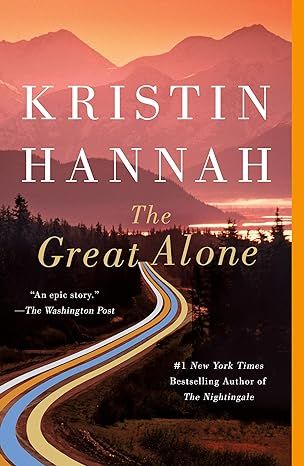
The Great Alone: A Novel
4.6
-
152,447
$5.49

The Four Winds
4.6
-
156,242
$9.99

Winter Garden
4.6
-
72,838
$7.37

The Nightingale: A Novel
4.7
-
309,637
$8.61

Steve Jobs
4.7
-
24,596
$1.78

Iron Flame (The Empyrean, 2)
4.6
-
164,732
$14.99
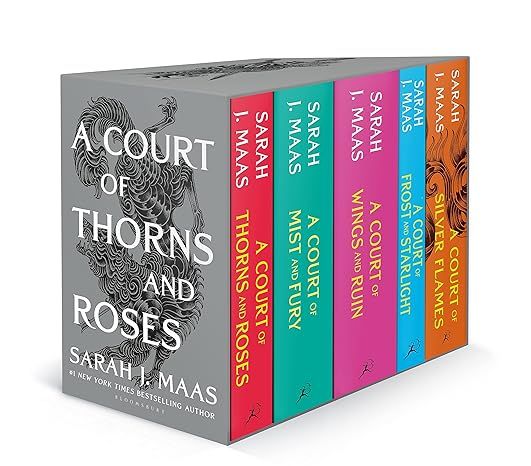
A Court of Thorns and Roses Paperback Box Set (5 books) (A Court of Thorns and Roses, 9)
4.8
-
26,559
$37.99

Pretty Girls: A Novel
4.3
-
88,539
$3.67
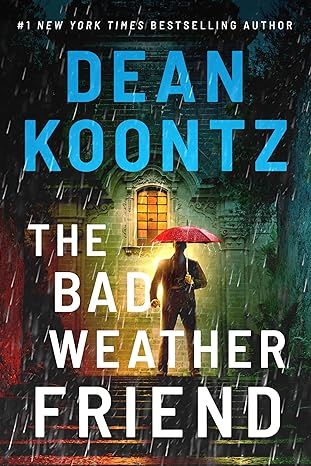
The Bad Weather Friend
4.1
-
34,750
$12.78
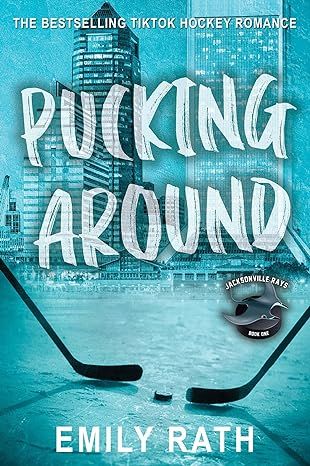
Pucking Around: A Why Choose Hockey Romance (Jacksonville Rays Hockey)
4.3
-
41,599
$14.84
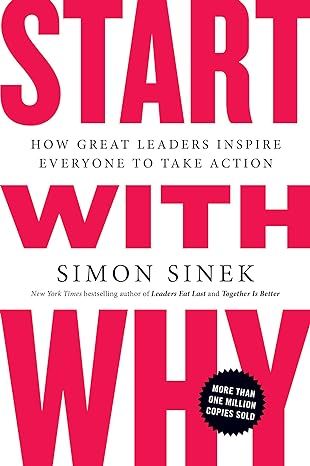
Start with Why: How Great Leaders Inspire Everyone to Take Action
4.6
-
37,152
$9.99
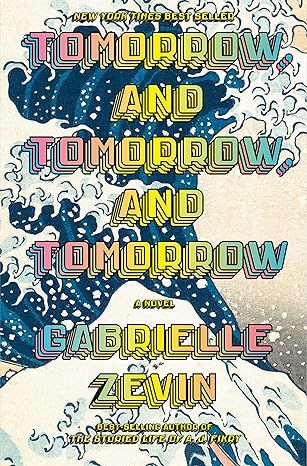
Tomorrow, and Tomorrow, and Tomorrow: A novel
4.4
-
95,875
$13.99
